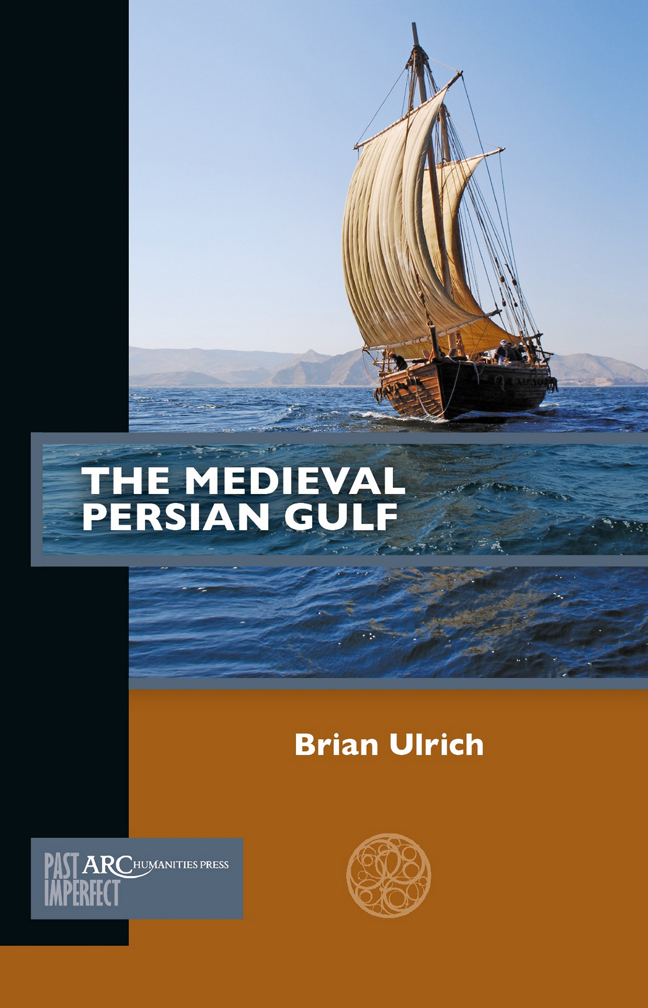Book contents
- Frontmatter
- Contents
- List of Illustrations
- Maps
- Timeline
- Introduction
- Chapter 1 Religious Diversity of the Early Islamic Era
- Chapter 2 Ethnic Diversity
- Chapter 3 The Society of Trade in the Early Islamic Period
- Chapter 4 New Trade Centres after 1000
- Chapter 5 Islamic Sects in the Late Medieval Gulf
- Chapter 6 Hormuz
- Conclusion
- Further Reading
Chapter 5 - Islamic Sects in the Late Medieval Gulf
Published online by Cambridge University Press: 20 February 2024
- Frontmatter
- Contents
- List of Illustrations
- Maps
- Timeline
- Introduction
- Chapter 1 Religious Diversity of the Early Islamic Era
- Chapter 2 Ethnic Diversity
- Chapter 3 The Society of Trade in the Early Islamic Period
- Chapter 4 New Trade Centres after 1000
- Chapter 5 Islamic Sects in the Late Medieval Gulf
- Chapter 6 Hormuz
- Conclusion
- Further Reading
Summary
Today, Westerners often associate the Gulf with religious conflict. On one side, Iran promotes a Shi’ite religious ideology, while on the other, Saudi Arabia’s official form of Sunni Islam, founded by Muhammad b. Abd al-Wahhab in the 1700s, sees Shi’ites as heretical innovators, and its leaders have often persecuted those in al-Hasa. Bahrain and Iraq have both seen internal conflict between Sunnis and Shi’ites. Contrary to occasional media headlines, these conflicts are in fact over strictly modern issues such as the distribution of national resources, but partisans still seek to martial history in making claims to local prominence and authenticity. Thus, modern Arabian Sunnis often say the Shi’ite population only dates to a period in the 1600s when al-Hasa was part of the Persian Safavid Empire, while Shi’ites in Bahrain and the nearby oases see the population as Shi’ite from the earliest decades of Islam, with Sunnis as later immigrants from central Arabia.
The actual religious history of the Gulf is far more complex. Chapter one described the origins of Islam and the beginnings of its distinct branches, particularly the Shurat, out of which Ibadism developed. Sunnism and Shi’ism were also taking shape by the 700s, but their distinctive elements were not yet developed, and we do not have clear evidence we can associate with them in the Gulf until the period covered in chapter four (trade after 1000). What follows below highlights information about different sectarian movements in the Gulf, occasionally reaching back into the past to explain how they came to be different. It also discusses Sufism, which has its roots partially in Basra and Abadan, but also developed into influential orders, one of which played a role in Gulf commerce.
Shi’ism in the Gulf
Shi’ism comes from the Arabic for a group of followers, indi-cating here those who believe that ˁAli, Muhammad’s cousin and son-in-law, should have succeeded him as leader of the Muslim community. Although ˁAli did have partisans in the early days of Islam, the modern doctrines of Shi’ism took time to develop. The most distinctive is the idea of the imamate, according to which in every generation there is a divinely guided successor to Muhammad from among his descen-dants through ˁAli. That divinely guided successor is known as the “Imam,” the same title used among all Muslims for one who leads prayer.
- Type
- Chapter
- Information
- The Medieval Persian Gulf , pp. 75 - 90Publisher: Amsterdam University PressPrint publication year: 2023

